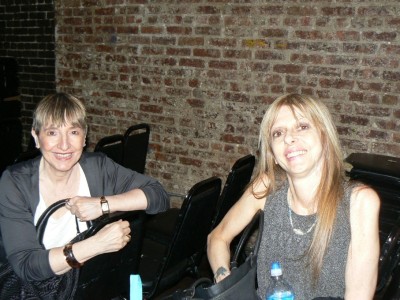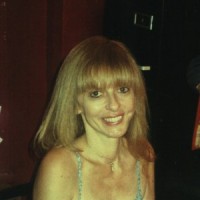Did you begin your creative writing life as a poet, or as a writer of prose? What forms did your very first publication successes take? And in which directions have you gravitated over the years as a writer?
I was raised on an Iowa farm by a single working mother. My father died when I was three and later my mother, who taught junior high language arts, told me that he’d written poetry. She held poetry up as the accomplishment without compare. So it was to poetry that I went at the start of my creative writing life. I’d always loved the individual word, the look and feel and taste of each one. Poetry lends itself to delectable language and the choosing of words as if they are jewels. You can hold them up to the light or feel their heft in the dark. Here the emerald, there the agate. But I also loved the narrative that pulls you through difficult terrain. From poetry I began writing stories and from stories gravitated to novels. Short stories are my favorite medium. I like their space restriction and almost poetical compression of image, intensity, and voice. My first publication successes were poems placed in college journals, and then I graduated to wider circulation literary magazines. Rejection is part of the writing life and there’s no way around that. Rejection hurts. In the last five years I’ve seen an explosion in alternative presses, web-based and print literary journals, Kindle, and e-books. We’re in the midst of the Internet age publishing revolution and it’s exciting. There are more markets for writers.
In a review of your newest novel, Half Girl, the poet and novelist Jill Hoffman says, “Stephanie Emily Dickinson is like a combination of Shakespeare, Emily Dickinson and Flannery O’Connor.” Who would you say are your strongest literary influences, past and present?
I’ve lived a bohemian life that has had its elements of tragedy. Therefore, I find those authors who write with an unflinching intensity really speak to me. The American original, Ai, was my first icon with her Cruelty, The Killing Floor, and Sin. She combines image and dramatic monologue in a dizzying, fever dream. I tried to emulate her but eventually realized that was impossible. Other influences include Jayne Anne Phillips, Black Tickets, Sam Shepard’s play, Fool for Love, all of Jean Rhys’ European novels, Voyage into the Dark, After Leaving Mr. Mackenzie, Quartet, Good Morning Midnight. I re-read all of Rhys’ novels every other year as they impart such different meaning at varying ages. I love all of Annie Proulx, Cormac McCarthy, all of Jane Austin, all of Flannery O’Connor, and the incomparable Djuna Barnes’ single work, Nightwood. I find the Soft Skull Press imprint publishes books that often become my personal favorites. Their authors walk that fine line at the edge where there is exquisite craft as well as transgressive content. For example Skels by Maggie Dubris and The City in the Crimson Coat, by Asli Erdogas are gems. I’m a promiscuous reader like Gertrude Stein who would pick up anything, even a Farmer’s Almanac. The best selling Ghosts of Belfast by Stuart Neville is poetry beneath its violent noir surface.
Congratulations on your recent Pushcart Prize nomination by the editors of Menacing Hedge. Your story, “From an Interview with Jean Seberg,” took my breath away in the harrowing candidness of the narrator, and in the poetics of your prose. As with this piece and others you have written—the character Sgt. Bethany Telecky from your short story “Amiga Mom from Planet Iraq” comes to mind—have you had a long process of research in order to channel these characters so convincingly? Or have you had an interesting, albeit unresearched, concept first, and gone ahead with the first draft, then followed up with research as you’ve revised?
Writers are always responding to stimuli and sometimes it comes together in a successful synthesis. I like to try new storytelling techniques and experiment with narrators who may be responding to the tragedies of our time. My stories usually start with the kernel of some lived experience, and a similar emotional register I share with the protagonists. In “Amiga Mom from Planet Iraq,” Bethany Telecky has just returned from Iraq, her left arm blown off in an IED explosion. She’s a bomb demolisher. The story traces her return from Walter Reed Hospital to her home. The Iowa homecoming takes place on a farm quite similar to the one where I was raised, her mother inspired by my own. The Iraq war scenes I researched, reading books on the war, listening to interviews on NPR, and then digging through rawer, unmediated texts and blogs. The blogs I found most interesting were those written by English-speaking Iraqi civilians. I researched bomb demolition. The old and new technologies being used to build IEDs and disassemble them. I tried to get a sense of Iraq’s flora and fauna. For me it’s very important to feel the landscape, to know what vegetation grows, what birds fly overhead. Jean Seberg has always fascinated me as she was raised in Marshalltown, Iowa not far from where I grew up. A smart, beautiful Midwestern girl, she acted on a world stage, and then sank under the weight of her celebrity. I connect emotionally to these characters, do initial research, write that first draft, and then continue the research as the piece is revised.
“Sonic Ear” is a coming-of-age narrative that gives us humor, quirkiness, and sorrow all at the same time. We simply want to keep reading it. Do you envision a sequel? There’d still be plenty of silverware left as currency.
I’ve written a number of Dalloway stories, but “Sonic Ear” is my first in two years. I’m glad she’s back and am thankful this character won’t leave me alone. I missed her. She is pessimistically optimistic, sassily sensitive, and the world she inhabits is urban and more light-hearted than the one I usually write from. I’m trying to mold these Dalloway stories into either a collection or novel. For me the great struggle is to plot my characters through a novel. Like many working writers, especially those not employed in academia, it’s a struggle to keep the holy flow going. Time is the elusive lover. The obstacles are everywhere: the work week, the commute, exhaustion, the notion that unless you’re making money you’re indulging in a hobby. It’s a valiant struggle to create something beautiful (or beautifully ugly) for love of the thing itself. Dalloway is the most chipper of my protagonists. She helps cheer me up by kicking routine and monotony right out the window.
Inquiring Pacific Northwest minds want to know: How did you enjoy your time living in Oregon? Will you come back someday for a reading, or a vacation? We have such excellent berries.
I studied with Ralph Salisbury and Richard Lyons while working on my MFA at the University of Oregon. I loved walking the streets of Eugene especially at dusk or after dark in the drizzling rain. It seemed a soft rain, soothing and comforting, in contrast to the more violent, lightning-prone rain storms of my Iowa childhood. The trees felt like sentient beings. Magnificent cedar, fir, and juniper, mysterious and fragrant sentinels. They protected the wanderer. I remember signs that read, “Don’t Californicate.” I’m not exactly sure what that meant but I interpreted it as “Take care of Oregon. It is God’s Country and a blessed place.” The organic movement had hit its stride and composting went on. There were tree planting cooperatives going in after the logging ended. So many people wanted to live in Oregon the jobs were hard to come by for my partner. After a stint selling Rainbow vacuum cleaners he found good work at the Willamette Valley Observer. I enjoyed the food, the fog, the Pacific Coast Highway, the driftwood, the ocean, and the people. The Northwest seemed to be about moodiness. It was a saxophone, muffled and less strident than the East Coast. I felt the closeness of the natural world, I saw breathtaking beauty. I also witnessed the stewardship of many Oregon’s residents as they worked to preserve it.



